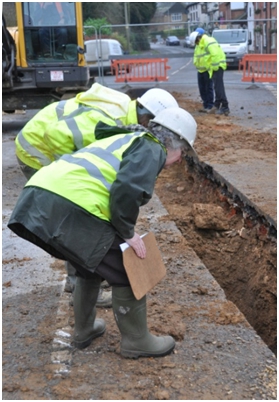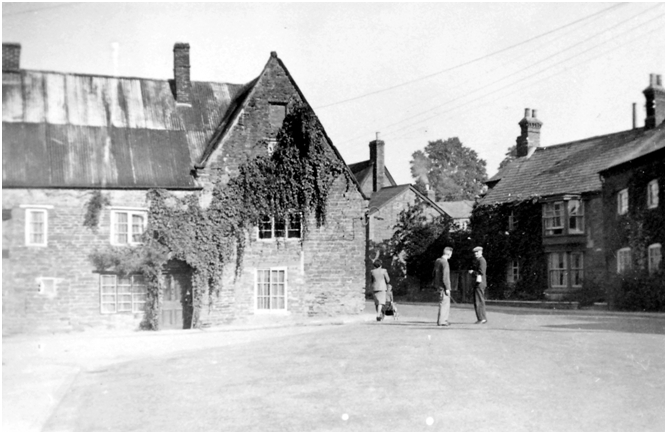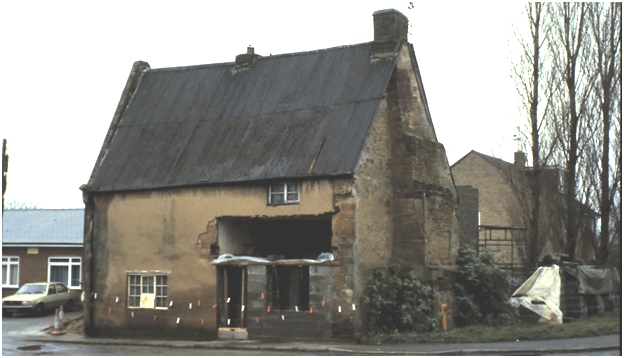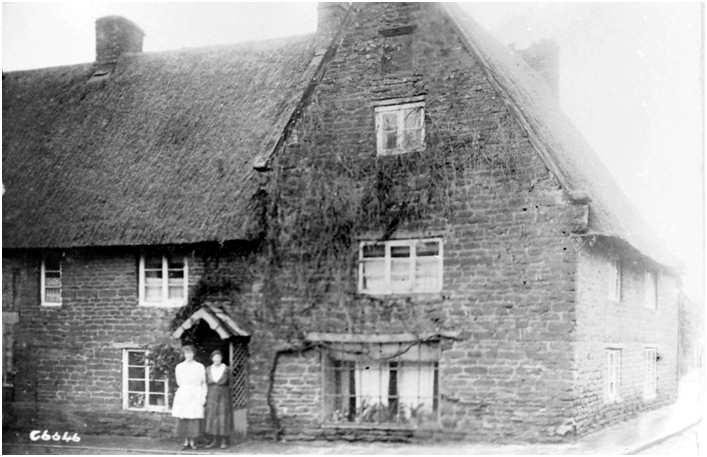Tudor Cottage: does it pre-date the Tudors?

In December 2014, Anglian Water dug up the road in West End in a bid to address long-standing flooding problems. When stone foundations were uncovered in the middle of the road, field archaeology and documentary research combined to reveal the story of the building’s past.
Older villagers can remember the house that is now Tudor Cottage, on the Green, when it was much bigger. But half of it was demolished in the 1960s because the County Council decided that it obstructed the flow of traffic through the village.

Some years ago, research on the old coaching inn in West Haddon, the Red Lion – which was bought up and put out of business in 1792 by John West (who happened to be the owner of The Crown), led to an embarrassing mistake. During the renovation of Tudor Cottage, in the early 1980s, an old archway was revealed that looked like a carriage entrance to what might have been the yard behind the house. Believing that no deeds had survived for this property which could have been used to corroborate the idea, conclusions were leapt to and the cottage identified as the remains of the old Red Lion.

But there were deeds in existence, and these have now been read. They put an end to the Red Lion theory, but opened up new lines of enquiry. They show that in 1738 this old farmhouse, and the land belonging to it, had belonged to Moses Clarke.
The description of the property in Moses Clarke’s will of that year identified it as Crane’s Farmhouse, with Crane’s Close as the farm’s home close (at this date, farmland was still a scatter of strips all over the parish in the open field system). The close is almost certainly what older villagers (again!) know as Auntie Beryl’s market garden (the land you can see through the window when you’re washing up at the Village Hall kitchen sink).
Earlier, in 1649, another member of the Clarke family had left a will. Edward Clarke left the house between his wife, Alice and his eldest son, another Edward, with this proviso:
‘It is my will that my son Edward, during his mother’s life shall have that part of the aforesaid messuage [house], yardland and closes called Cranes which his grandmother held and to be allowed wood for the new building of that house which is ruinous...’
Why was the house ruinous? Was the part of the house ‘his grandmother held’ a kind of granny annexe, which she had occupied in her widowhood, and which had been allowed to fall into disrepair? Or, bearing in mind the date of the will – was it ‘one of the ruins that Cromwell knocked about a bit’ perhaps on his way to or from Naseby in 1645? Did Edward junior rebuild from scratch? Or on the old foundations?
(The earliest parish register to survive for West Haddon begins in 1653, so the grandmother’s name will remain a mystery, but Moses, son of Edward Clarke, husbandman [farmer] and Mary his wife, was baptised on 29.02.1655/6. This provides a possible link between the two Clarke wills.)

So the foundations in the road may date from Edward’s rebuilding, but they might equally be part of the original farmhouse. How old that might be is unclear. But a deed in the National Archives refers to the house and lands in West Haddon belonging, at an earlier date, to William Crane (already deceased before the making of this deed), then to his widow Elizabeth and John, William’s son and heir. This deed is dated 1495, so it would not be unreasonable to suggest that William Crane may have been living in that house and farming that land in 1485, at the same time as King Richard III was losing his crown just up the road in Leicestershire. King Richard was succeeded by Henry VII, the first Tudor monarch to sit on the throne of England. The deeds do not refer to this house as Tudor Cottage until 1944, but there seems to be a chance that it was standing (or at least some original part of it) in the village even before the time of the Tudors.
WJRaybould, Dec. 2014.
